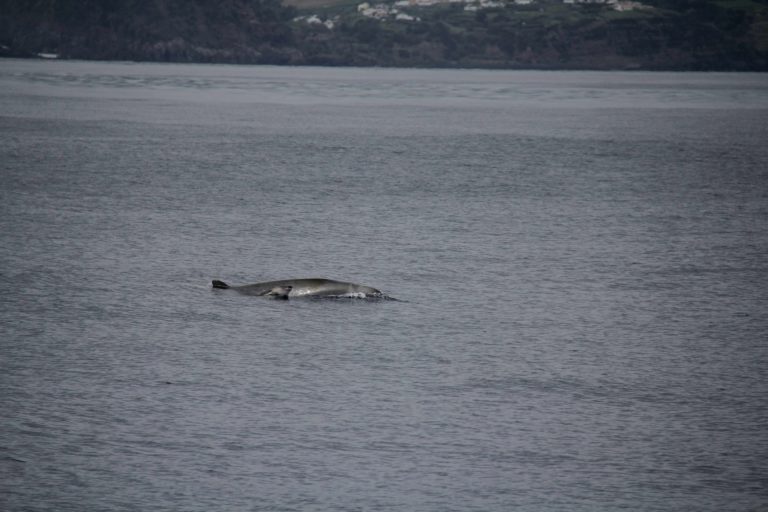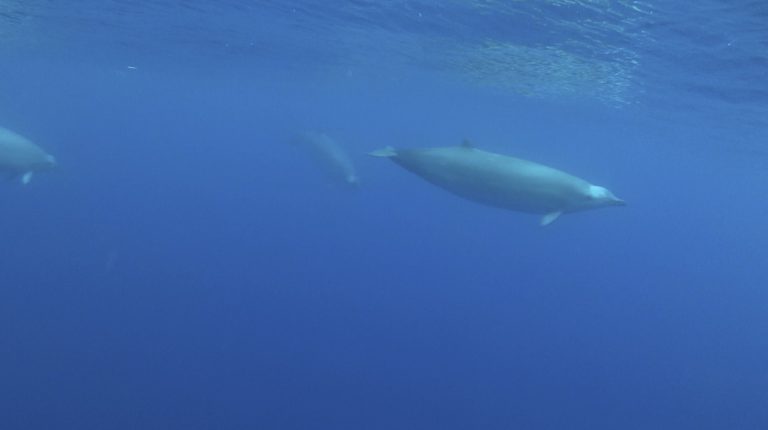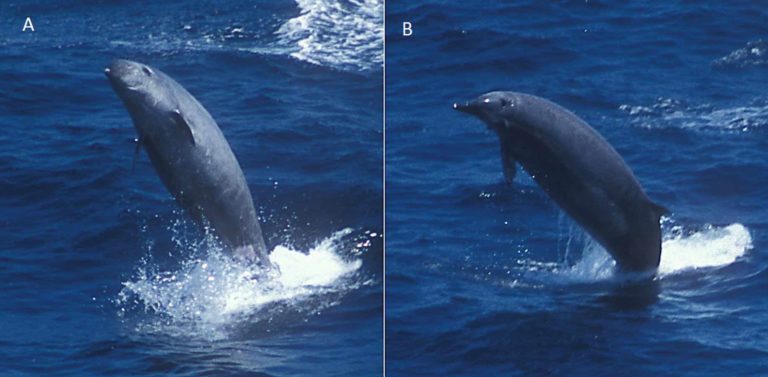- True’s beaked whale is difficult to spot at sea, and remains a poorly studied species.
- By analyzing stranding data and live sightings of the whale, researchers confirm that the Azores and Canary Islands may actually be a hotspot for studying the natural behavior of the species.
- For the data-scarce whale species, live sightings and video recordings are highly valuable because they add to information that helps identify a species accurately.
- This in turn can help scientists monitor the status of their populations and protect them.
True’s beaked whales are notoriously elusive.
Like other beaked whales, they dive deep into oceans for prolonged periods of time, and surface only for short breathing intervals, making them very difficult to study. So far, only a handful of live sightings of this whale species have been recorded.
But now, an international team of scientists has captured the first ever underwater video of wild True’s beaked whales swimming around Pico Island in the Portuguese Azores in northeast Atlantic Ocean. They have also photographed a calf of the species for the first time. The team reported their findings in the journal PeerJ.
First underwater video of True’s beaked whales. Video by Roland Edler.
The True’s beaked whale belongs to a family of cetaceans called Ziphiidae that includes 22 species of beaked whales. Despite being large-sized, these whales are extremely difficult to observe and remain one of the least understood mammals in the world. This is because they spend most of their lives underwater, sometimes feeding at depths of nearly two miles for hours. These whales are also hard to spot because they are not usually attracted to boats and do not perform aerial acrobatics like dolphins. In fact, they are so poorly studied that scientists have discovered three new species of beaked whales in just the last two decades.
Moreover, the True’s beaked whale is similar in appearance to the other beaked whales in its genus Mesoplodon — Blainville’s, Sowerby’s, and Gervais’ beaked whales — and is very difficult to distinguish at sea. Unsurprisingly, scientists are still figuring out the whale’s distribution in the North Atlantic Ocean and in the Southern Hemisphere.

Now, by analyzing stranding data and live sightings of the True’s beaked whale recorded by scientists, whale watch companies and educational teams in Azores and Canary Islands, researchers confirm that the Azores and Canary Islands may actually be a hotspot for studying the natural behavior of the species.
“The relative abundance of live sightings of True’s beaked whales in deep coastal waters off the Azores, and to some extent off the Canary Islands, suggests that these archipelagos could be ideal areas to research True’s beaked whales in the wild,” the authors write in the paper. “This is relevant because the identification of hot-spots where some species of beaked whales are found with reliability has provided most of our current knowledge about the natural behaviour of ziphiids.”
The team also highlighted several morphological features of the True’s beaked whale, including a new coloration pattern, which may help in identifying the species at sea.
For the data-scarce whale species, live sightings and video recordings are highly valuable, researchers say, because they add to the information that helps identify a species accurately. This in turn can help scientists monitor the status of their populations and protect them.


Citation:
- Aguilar de Soto N, Martín V, Silva M, Edler R, Reyes C, Carrillo M, Schiavi A, Morales T, García-Ovide B, Sanchez-Mora A, Garcia-Tavero N, Steiner L, Scheer M, Gockel R, Walker D, Villa E, Szlama P, Eriksson IK, Tejedor M, Perez-Gil M, Quaresma J, Bachara W, Carroll E. (2017) True’s beaked whale (Mesoplodon mirus) in Macaronesia. PeerJ 5:e3059 https://doi.org/10.7717/peerj.3059
FEEDBACK: Use this form to send a message to the author of this post. If you want to post a public comment, you can do that at the bottom of the page.
